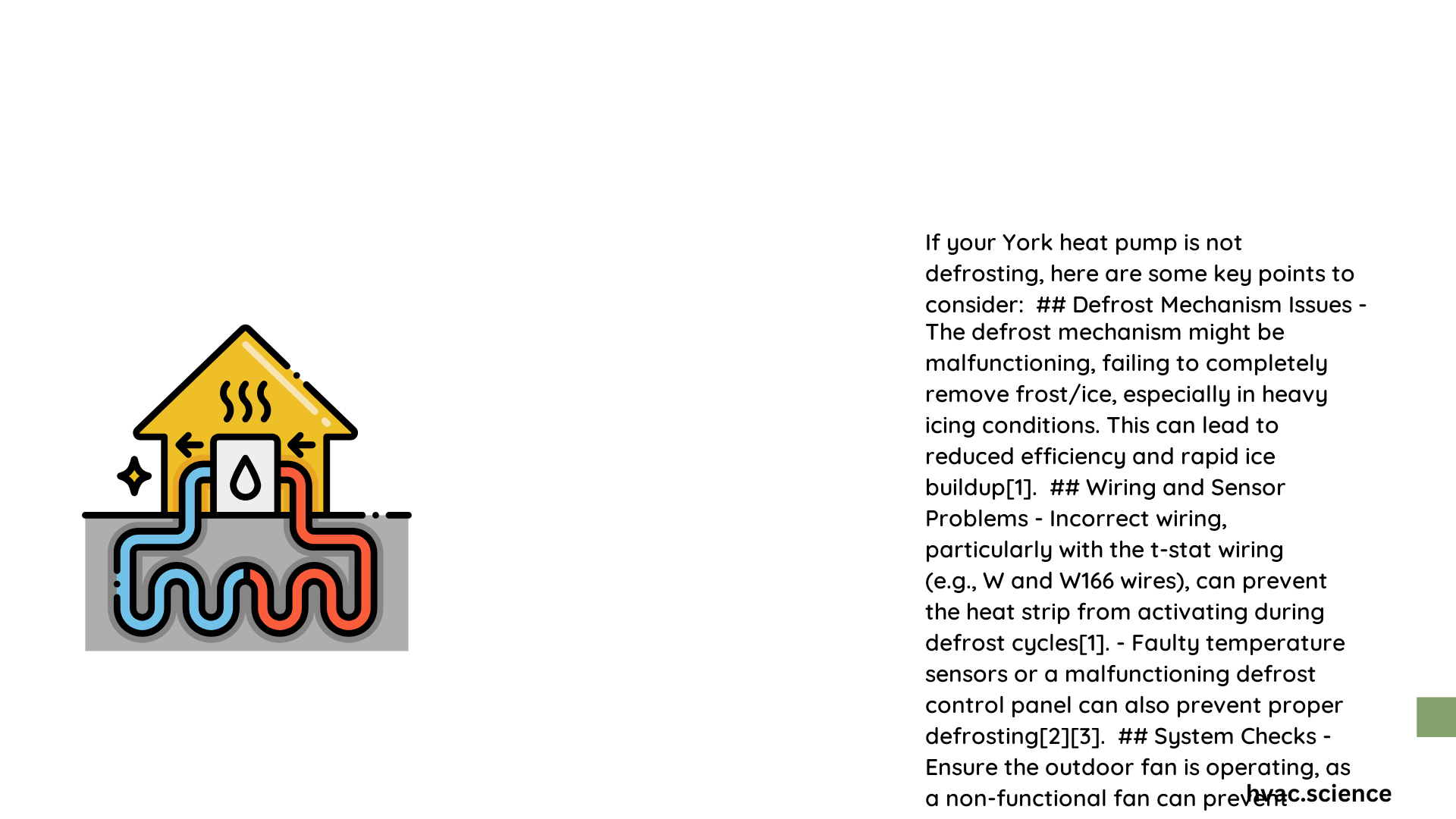When a York heat pump fails to defrost, homeowners face potential system inefficiency and potential damage. Ice accumulation on outdoor coils can significantly reduce heat transfer efficiency, causing your system to work harder and consume more energy. Understanding the root causes and implementing targeted solutions is crucial for maintaining your heat pump’s performance and preventing costly repairs.
What Causes York Heat Pump Defrost Failures?
Why Do Sensors Impact Defrost Performance?
Sensors play a critical role in initiating the defrost cycle. Faulty ambient or liquid line sensors can disrupt the heat pump’s ability to recognize ice buildup:
- Ambient Sensor Issues
- Provides outdoor temperature readings
- Determines when defrost cycle should activate
-
Can malfunction due to electrical or physical damage
-
Liquid Line Sensor Problems
- Monitors refrigerant line temperature
- Helps calculate ice accumulation
- Potential failure points include:
- Loose connections
- Physical damage
- Electrical short circuits
How Do Mechanical Components Affect Defrosting?
| Component | Potential Issue | Impact on Defrost Cycle |
|---|---|---|
| Outdoor Fan | Non-operational | Reduces heat exchange efficiency |
| Reversing Valve | Mechanical Failure | Prevents proper refrigerant flow |
| Coil | Physical Damage | Impedes heat transfer |
What Electrical Problems Prevent Defrosting?
Electrical issues can significantly disrupt the defrost mechanism:
- Defrost Control Board Malfunction
- Incorrect wiring
- Failed relay switches
-
Damaged circuit components
-
Thermostat Complications
- Incorrect configuration
- Wiring errors
- Sensor miscalibration
How to Diagnose York Heat Pump Defrost Problems?

Step-by-Step Diagnostic Approach
- Visual Inspection
- Check outdoor unit for excessive ice buildup
- Examine sensor connections
-
Look for visible wire damage
-
Temperature Verification
- Use thermometer to measure outdoor coil temperature
- Compare readings with manufacturer specifications
-
Typical defrost initiation occurs below 30°F
-
Electrical Testing
- Use multimeter to check sensor resistance
- Test defrost control board functionality
- Verify voltage at critical connection points
What Are Recommended Repair Strategies?
- Sensor Replacement
- Cost: $100-$250
-
Professional diagnosis recommended
-
Control Board Repair
- Cost: $200-$500
-
Requires specialized technical knowledge
-
Component Replacement
- Outdoor fan motor: $300-$600
- Reversing valve: $400-$800
Professional Maintenance Tips
Preventive Measures
- Annual professional inspection
- Regular filter replacement
- Keep outdoor unit clear of debris
- Monitor system performance
When to Call a Professional?
- Persistent defrost cycle failures
- Ice accumulation exceeding 1/4 inch
- Unusual system noises
- Significant performance reduction
Technical Specifications
Typical Defrost Cycle Parameters:
– Initiation Temperature: 30°F
– Maximum Cycle Duration: 10 minutes
– Cycle Frequency: Every 30-90 minutes
Cost Considerations
| Repair Type | Estimated Cost | Complexity |
|---|---|---|
| Sensor Replacement | $100-$250 | Low |
| Control Board Repair | $200-$500 | Medium |
| Major Component Replacement | $400-$800 | High |
Final Recommendations
Addressing York heat pump defrost issues requires systematic diagnosis and potentially professional intervention. While some troubleshooting can be performed by homeowners, complex electrical and mechanical problems demand expert attention.
References:
1. Jacob Heating & Air Conditioning
2. HVAC-Talk Forum
3. One Hour Air Fort Worth
